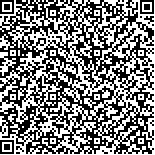Archive > Volume 40 Issue 1 > 2014,40(1):108-113. DOI:10.7519/j.issn.1000-0526.2014.01.013 Prev Next
Relationship Between Acute Cerebrovascular Disease and Meteorological Factors in Beijing and Its Forecast
- Article
- Figures
- Metrics
- Preview PDF
- Reference
- Related
- Cited by
- Materials
Abstract:
Based on daily emergency case data of cerebrovascular disease in Beijing during 2006-2010, which are obtained from the Beijing urgent care centre (120). The association between the daily meteorological factors and hospital emergency visits for cerebrovascular disease in different seasons in Beijing is explored. Then we choose meteorological factors with regression method so as to obtain the forecast factors which are finally used to build forecast models in different seasons based on the ANN (artificial neural network) method, and the daily hospital visit numbers are divided into four grades by using multiple regression probability grade analysis. The results show that: (1) There are obvious seasonal and diurnal variations in the number of acute cerebrovascular disease, the number of cases is significantly higher in spring and winter than in summer and autumn, and concentrate mainly in 09:00-14:00 BT. (2) The meteorological factors have obvious hysteresis to induce the recurrence of cerebrovascular disease. In addition, statistical results show that the condition of high temperature and humidity weather in summer or cold air activity in winter and autumn may aggravate disease. (3) The models in spring, autumn and winter are used to forecast daily disease grade of new samples, the test results show the complete accuracy exceeds 30%; If the difference between the forecasted grade and actual grade is no more than 1, the accuracy exceeds 60%. The research results offer scientific reference for preventing the development of cerebrovascular disease and scheduling such emergency measures as 120 emergency vehicles.
Keywords:
Project Supported:
Clc Number:


Mobile website









